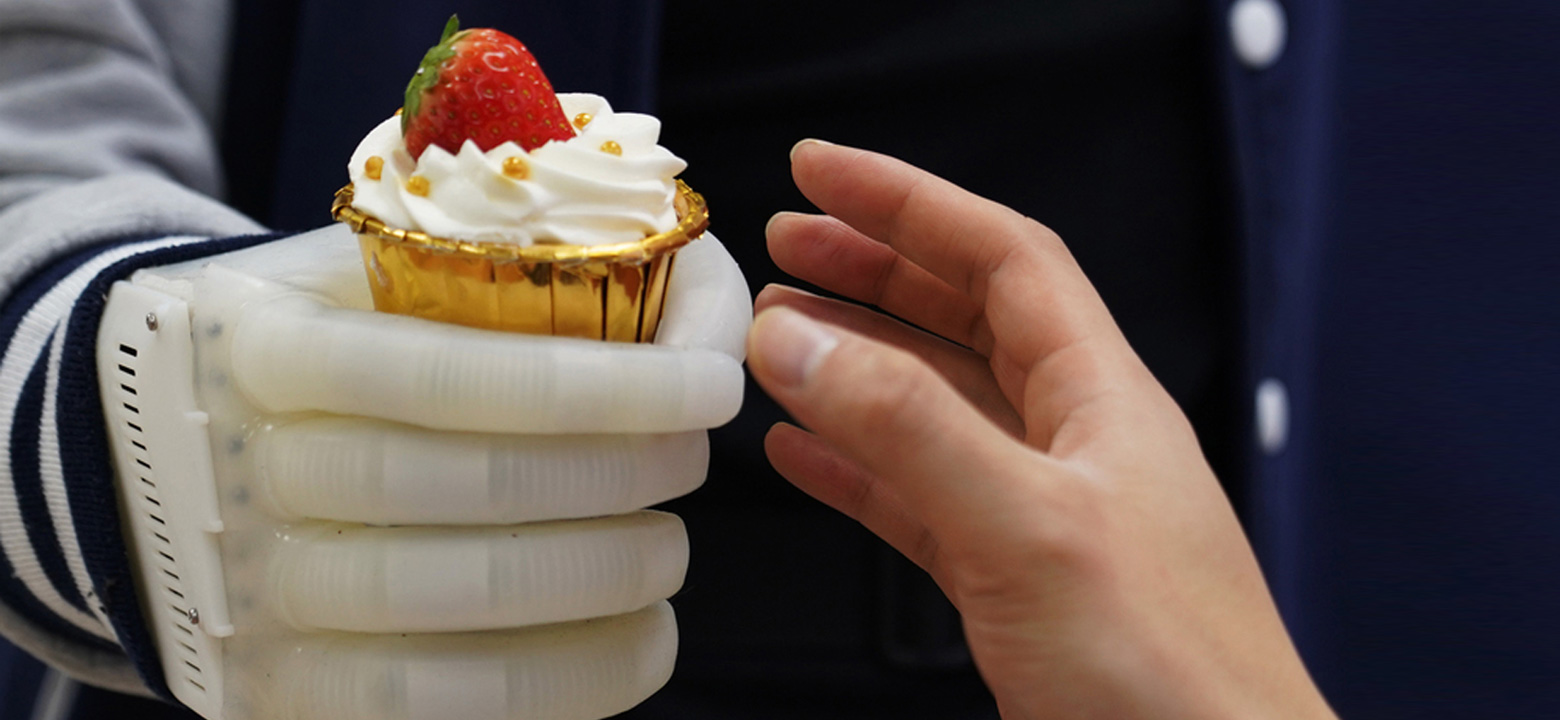
The ultimate goal of prosthetics has always been to create devices that mimic the limbs they replace. While the field of neuroprosthetics has been around since the mid-century, only now are researchers discovering how to let prosthetic users feel their surroundings. Recently, researchers from MIT and Shanghai Jiao Tong University worked together to create a tactile robotic hand. Best of all, this sophisticated device cost as little as $500 to build.
The secret of the hand's effectiveness—and its low price—is in its construction. It consists of a 3D printed palm structure and five fingers. Each finger is made up of fibers that give support, much like bones, and a pneumatic system that behaves like muscle to allow the fingers to flex with precision. It has four set types of grasps, like the pincer and hammer grasps, but researchers say it could be outfitted with more.
The most interesting thing about this prosthetic is the way it allows the user to direct their movements, and even feel the results. It works with a computer program that relies on electromyography sensors attached to the wearer. These sensors pick up the activation signals of muscles in the residual limb, and the program translates them in a way that allows the prosthetic to complete the movement. For example, making a fist involves muscle activity that originates further up the forearm. The electromyography sensors can detect movements in the remaining forearm muscle and determine that they match up with the movements necessary to make a fist. The prosthetic hand then inflates or deflates the pneumatic system as necessary to allow the inflatable fingers to curl into a fist shape.
While this is advanced as it is, the prosthetic also allows for tactile feedback. Each finger is outfitted with a small pressure sensor. These are connected to different spots on the arm, which allows the wearer to determine when and how firmly they're touching something with the prosthetic's thumb, forefinger, or one of its other fingers. The hand is even functional and sensitive enough to pet a cat.
Despite the technology involved, this prosthetic hand only weighs about half a pound. That's even less than a biological human hand, which typically clocks in between a pound and a pound and a half. Similar concepts rely on heavy, bulky servos to move each finger, which make the end product heavy and bulky. Since this design uses a pneumatic system instead, the bulk of the necessary internal workings can be worn at the user's waist. This significantly reduces the weight of the prosthetic hand itself, making it much easier and more comfortable for the user.
This prosthetic is also surprisingly cheap. As mentioned above, it can be constructed for as little as $500, largely courtesy of its 3D printed parts. This could theoretically also allow it to be customized for the user if need be since 3D printing relies on files that can be edited and re-loaded to the printer on the fly.
All prosthetics have a learning curve, and some are steeper than others. No matter how sophisticated an artificial limb may be, there will always be an adjustment period. Remarkably, this pneumatic hand has a very short learning period—users were able to pick up on how to use it in about fifteen minutes. After this short training period, users could stack checkers with precision, turn the pages of a book, use a pen, lift a weight, and even pick up easily damaged things like bread and fruit. These tests demonstrate the considerable range of the prosthetic's abilities, from making precise, fine movements, to handling delicate objects, to lifting considerably heavier things.
Prosthetics have come a long way from their first incarnations. Now, they no longer just replace a limb cosmetically—they can feel and move with the wearer's intentions. This new design from MIT and Shanghai Jiao Tong University brings together pneumatics, electromyography sensors, pressure sensors, 3D printing, and machine learning to create a lightweight, inexpensive prosthetic hand capable of performing many of the functions of a biological one.